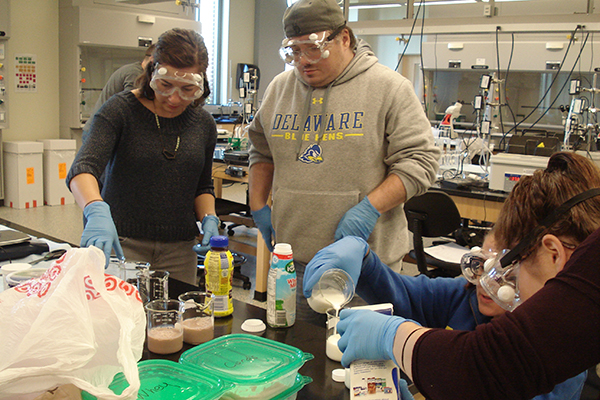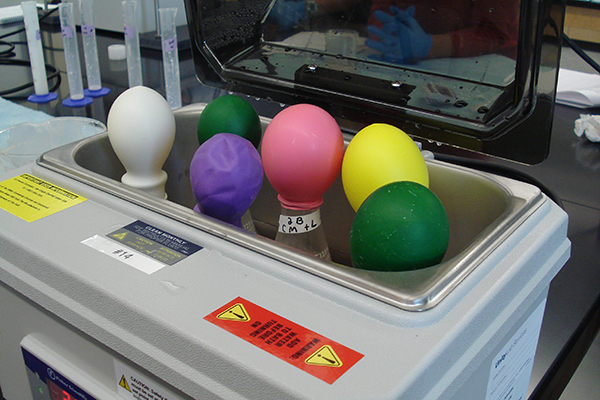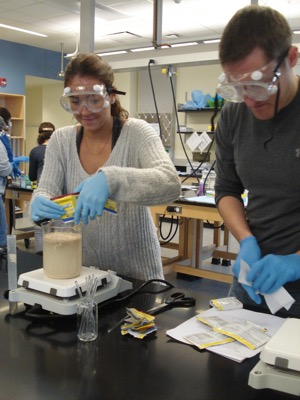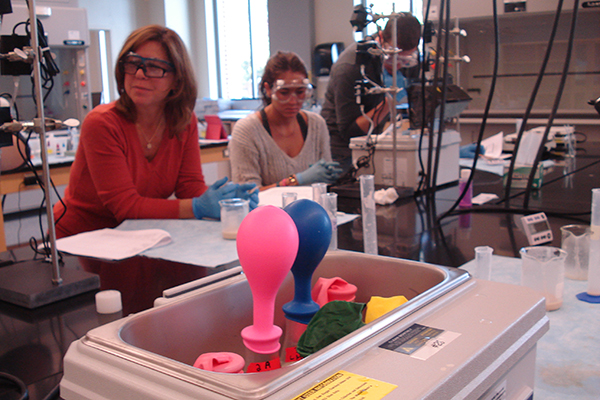


Measuring milk
Nutritional anthropology students conduct analysis of milk in ISE Lab
11:24 a.m., Nov. 18, 2014--An anthropology class ventured into the University of Delaware’s Interdisciplinary Science and Engineering Laboratory (ISE Lab) recently, where the students used high-tech pressure sensors and low-tech balloons to analyze milk.
The class, a seminar in nutritional anthropology taught by assistant professor Melissa Melby has been using milk as a case study to examine food processing and digestion.
Campus Stories
From graduates, faculty
Doctoral hooding
In addition to seminar-style discussions of readings, the course features a series of problem-based learning labs called “Encounters with Milk” that also teach students such aspects of the scientific method as observation and hypothesis testing, Melby said.
The fifth lab in the series this semester focused on the analysis of lactose in various dairy products.
“Students performed a common food processing technique, making milk into cheese, and then examined how this and other food processing and treatments affect lactose content,” said Melby, who designed the project with Judith Free, a laboratory coordinator in ISE Lab.
The class had been studying ways to lower the amount of lactose in dairy products to reduce symptoms associated with lactose intolerance.
Both the pressure sensors and the balloons the students used measured the carbon dioxide produced from yeast breaking down glucose. The glucose had been broken down from lactose by the addition of a common supplement used by people with lactose intolerance.
In later discussions about the lab, one student called the project “enriching” and said, “I have never had a class with so many formats.”
Working on a project in laboratory science was an engaging change of pace for the students in the class, most of whom who are social science majors, Melby said.
“I think the use of ISE Lab for biocultural anthropology labs is exciting — for students, faculty and the ISE Lab,” she said.
Photos courtesy of Melissa Melby











